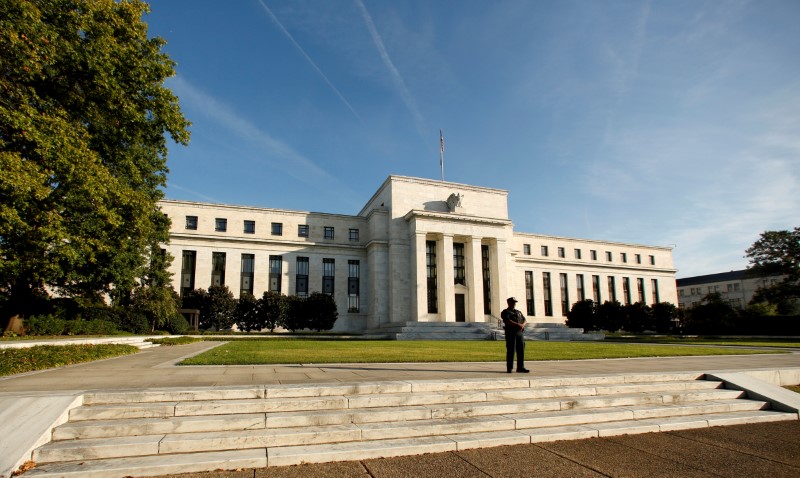By Dan Burns
NEW YORK (Reuters) - Recent data on the performance of the U.S. economy has been generally on the soft side, a sore point discussed at length by Federal Reserve officials at their latest meeting, minutes of the gathering released on Wednesday showed.
In fact, measures developed by Citigroup (NYSE:C) economists to track how incoming economic data stacks up against market expectations show the latest numbers from the United States have been falling persistently short of forecasts. Meanwhile, Citi's comparable "economic surprise" indexes for other regions show just the opposite: upside surprises.
(To view a graphic on 'Citigroup's Economic Surprise Index' click http://reut.rs/2qTbDO3)
Of particular concern for the Fed are recent undershoots on key gauges of inflation that have been lagging the central bank's stated target of 2 percent annualized consumer price growth.
Market-based measures of long-term inflation expectations have also weakened substantially, enough so that Fed policymakers agreed at their last meeting that before raising rates again they would need stronger data to confirm recent weakness was not a new trend.
With doubts rising over U.S. President Donald Trump's ability to deliver policies to promote faster economic growth, many of these gauges have fallen back to near Election Day levels. For graphic, see: http://reut.rs/2rU9Syl
Citi's inflation surprise indexes underscore the Fed's anxiety.
As this chart shows, recent U.S. inflation readings have returned to their long-term trend of underperforming against forecasts after a brief run of upside surprises earlier this year.
Meanwhile, inflation reports from Europe have topped expectations by the widest margin on record. The rest of the so-called Group of 10 largest developed economies are meanwhile beating forecasts by the most since the financial crisis nearly a decade ago, even after taking into account the drag from U.S. numbers. Even Japan, notorious for its decades-long struggles against deflation, is posting inflation data notably above forecasts.
(For a graphic on 'U.S. Inflation Surprises vs Europe, Japan & G10' click http://reut.rs/2qoi4oA)
The upshot is that the inflation "surprise" gap between the United States and Europe has never been wider. Between the United States and the rest of its G-10 peers, that gap is the widest in 15 years.
The next chance for that gap to narrow comes in the week ahead when the personal consumption expenditures price index for April is reported by the Bureau of Economic Analysis. In March, the core PCE rate, excluding food and energy costs and considered the Fed's favored measures of inflation, fell further from the Fed's target.
Tuesday's PCE release will also be the Fed's last piece of key inflation data before policymakers gather in mid-June for their next rate-setting decision.
(For a graphic on 'Inflation Surprise Indexes - Citi' click http://reut.rs/2rRAakM)

(Reporting and graphics by Dan Burns; Editing by Meredith Mazzilli)